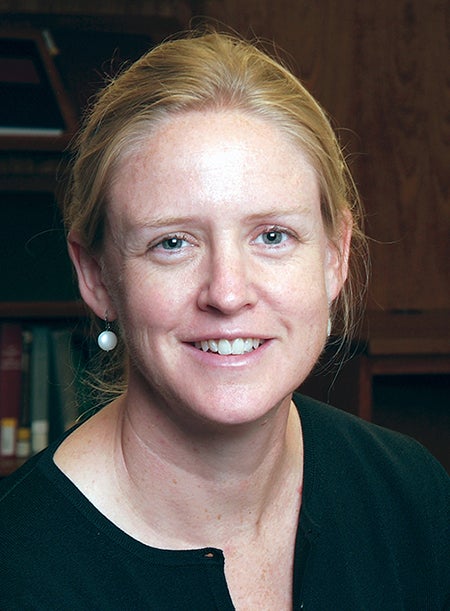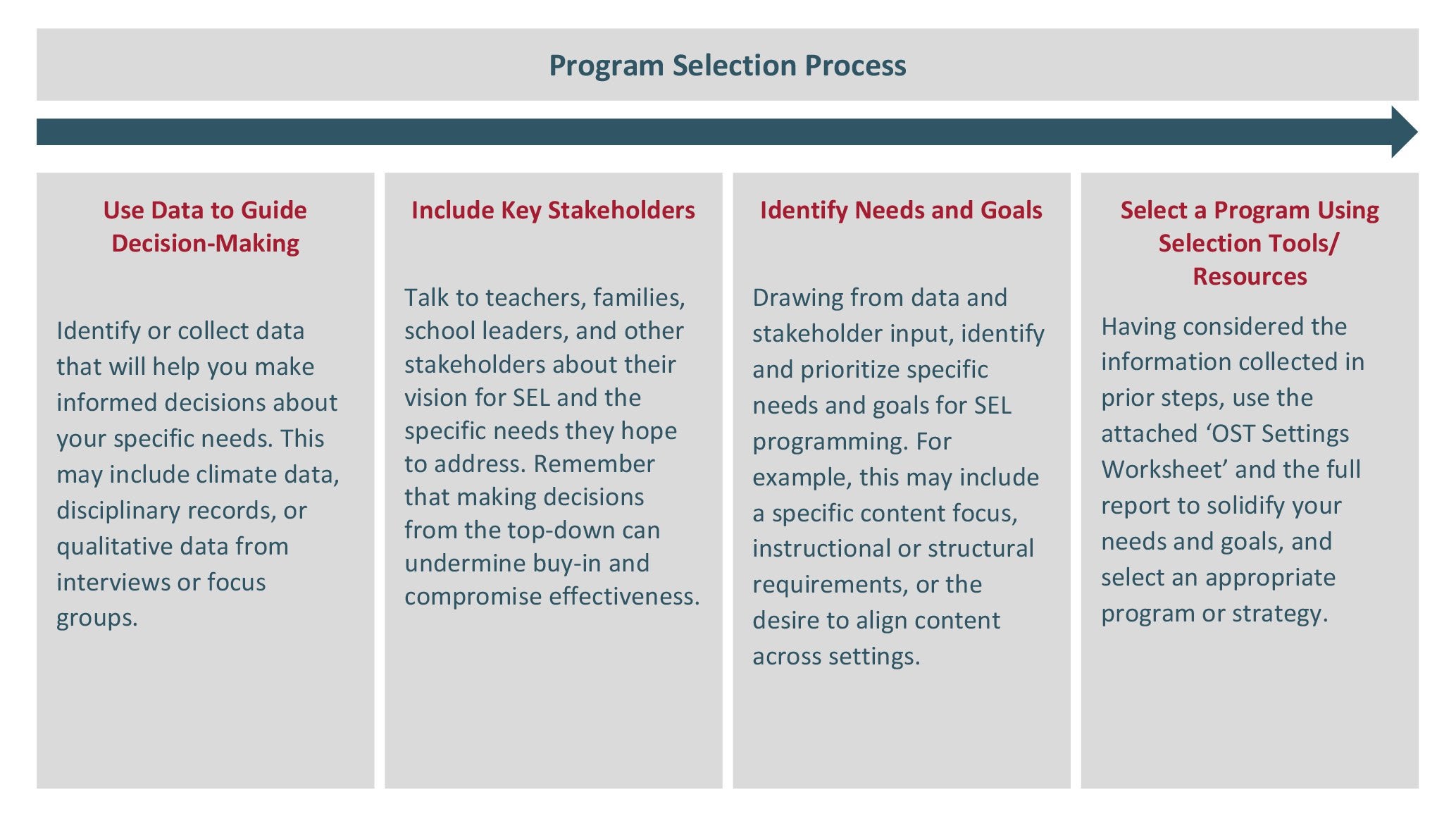Talk to out-of-school-time (OST) providers about the growing interest in social and emotional learning (SEL) across the country, and they’re liable to say, “Finally!” Afterschool and summer programs have often set out to be places where children build healthy relationships, learn to navigate social situations and discover what they’re good at and passionate about.
 Now, OST providers, along with scholars, schools, and foundations, are thinking more deeply than ever about what exactly SEL is and what it takes to promote it.
Now, OST providers, along with scholars, schools, and foundations, are thinking more deeply than ever about what exactly SEL is and what it takes to promote it.
As part of that effort, Wallace commissioned Harvard Professor of Education Stephanie Jones to analyze 25 widely used SEL programs. Jones and her team recently published a research brief, one in a series, that looks specifically at how those programs can be applied in OST settings (only three of the programs were designed primarily for OST). We asked Jones to walk us through the implications of her research for OST organizations.*
What unique contributions can OST providers make to children’s social and emotional learning?
Unlike the majority of schools, OST programs tend to have fewer curricular demands, giving them greater flexibility and more opportunity for SEL programming. OST settings also typically provide greater opportunity for students to engage in informal conversations with peers and adults and build positive relationships, which we know is critical to SEL.
Many OST providers would say that SEL is inherent to what they do. You note, however, that few have “a primary or explicit focus on developing and fostering specific SEL skills.” What are the advantages of adopting a curriculum with a specific focus on SEL?
It's true that many OST programs address SEL skills in their mission, support a climate that fosters SEL skills, or use general SEL practices and behavior management approaches—and those things are important. But research shows that only programs that follow the elements of SAFE (Sequenced set of activities, Active forms of learning, Focus on building SEL skills, and Explicit SEL learning objectives) improved children's skills and behavior. Adopting an evidence-based curriculum with a specific focus on SEL is one way to make sure those SAFE elements are present. Moreover, evidence-based curricula have usually been tested and refined to ensure the best possible results, and typically come with a variety of supports such as lessons or activities, staff training, and resources like coaching or assessment tools for monitoring progress and improvement.
How can OST providers interested in adopting an SEL program get started? What are the first steps?
We recommend OST programs begin by collecting data that will help them make informed decisions. This might include collecting school climate and disciplinary data from a partner school, or talking to families, OST staff, schools, community leaders and other stakeholders about their vision for SEL and the needs they hope the program will address. Drawing from that information, organizations can then identify and prioritize specific needs and goals. Finally, they can use our Navigating SEL report to identify evidence-based programs and strategies that best meet those needs. There’s a worksheet at the back of the report designed to help them through the process.
You emphasize the importance of adapting pre-packaged SEL programs so they fit an OST provider’s individual context. Can you give an example of what this looks like in practice?
An OST program that focuses on building literacy might choose SEL strategies that use books, stories, or poems, whereas an OST program with a focus on sports or health might choose to rely more heavily on strategies that feature games or kinesthetic activities. Similar adaptations can be made to help programs better fit specific behavioral needs, cultural perspectives, student interests and more. It might also make sense to adapt a program to better fit the timing of an afterschool program—perhaps a single lesson is delivered in short periods over the course of multiple days.
Another brief in this series introduces the concept of “kernels” as a cost-effective and flexible way to build social and emotional skills. Can you give us an overview of your work on kernels? What are they? How can they help OST providers?
Kernels of SEL practice are short, targeted strategies used by effective programs to build specific skills and effect specific behavioral changes in children. In contrast to more comprehensive SEL programs, a toolkit of SEL kernels is low-cost; requires little time, training, or instruction for staff; and can be customized to individual, classroom, cultural, and site needs. They may be particularly helpful to OST providers in three ways: 1) They’re easy to integrate with the existing structure and mission of an OST program in a variety of ways, either as behavior management tools, short transition activities, or more structured lessons; 2) they enable staff to choose strategies that best suit the needs and interests of the children in their program, keeping the OST space fun and engaging; and 3) they provide opportunities for OST providers to align their SEL work with in-school efforts in a way that is additive rather than repetitive.

*This interview has been edited and condensed.




